Protect Your SMB Assets
Building an MVP responsive web experience selling commercial auto insurance in 4 months.

Role
Interaction design
Client
Large insurance company
Duration
August 2020 - December 2020 (4 months)
Building an MVP responsive web experience selling commercial auto insurance in 4 months.

Interaction design
Large insurance company
August 2020 - December 2020 (4 months)
In 2020, a large insurance company created a new commercial auto insurance product for small businesses. Accenture was engaged to develop a digital experience to help the company sell the new insurance product.
Working with a 3 person design team (1 creative director and 1 visual designer), I owned the interaction design of a responsive web experience for direct to consumer sales and a responsive web experience for insurance sales reps.
Collaborating with developers, product stakeholders, and business stakeholders, we built an MVP experience for a pilot market that launched in 4 months.
The experience is live in select US markets. Further expansion of the experience is planned over time.
I designed a responsive (desktop, tablet, and mobile) quoting experience to get you the coverage that you need at a price that is affordable to you. The experience consists of 5 different parts, starting from discovery of the product through to account management after you have purchased coverage from the insurance company.
The landing page introduces prospective customers to the Company's commercial auto insurance product and sets expectations for what the process looks like to get a quote.
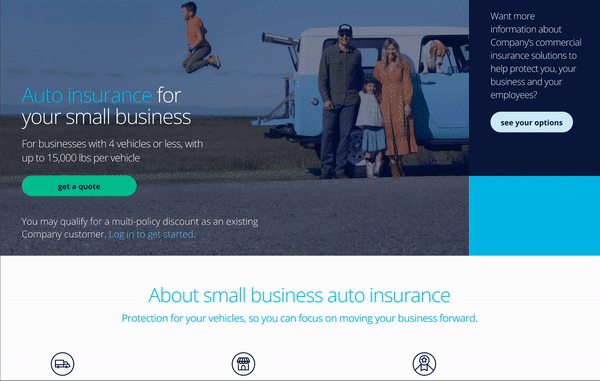
Then, customers are asked a series of questions about their business to qualify them and make sure that the Company can serve them. Afterwards, customers answer a series of questions so that we can understand their needs and what type of commercial coverage they need.
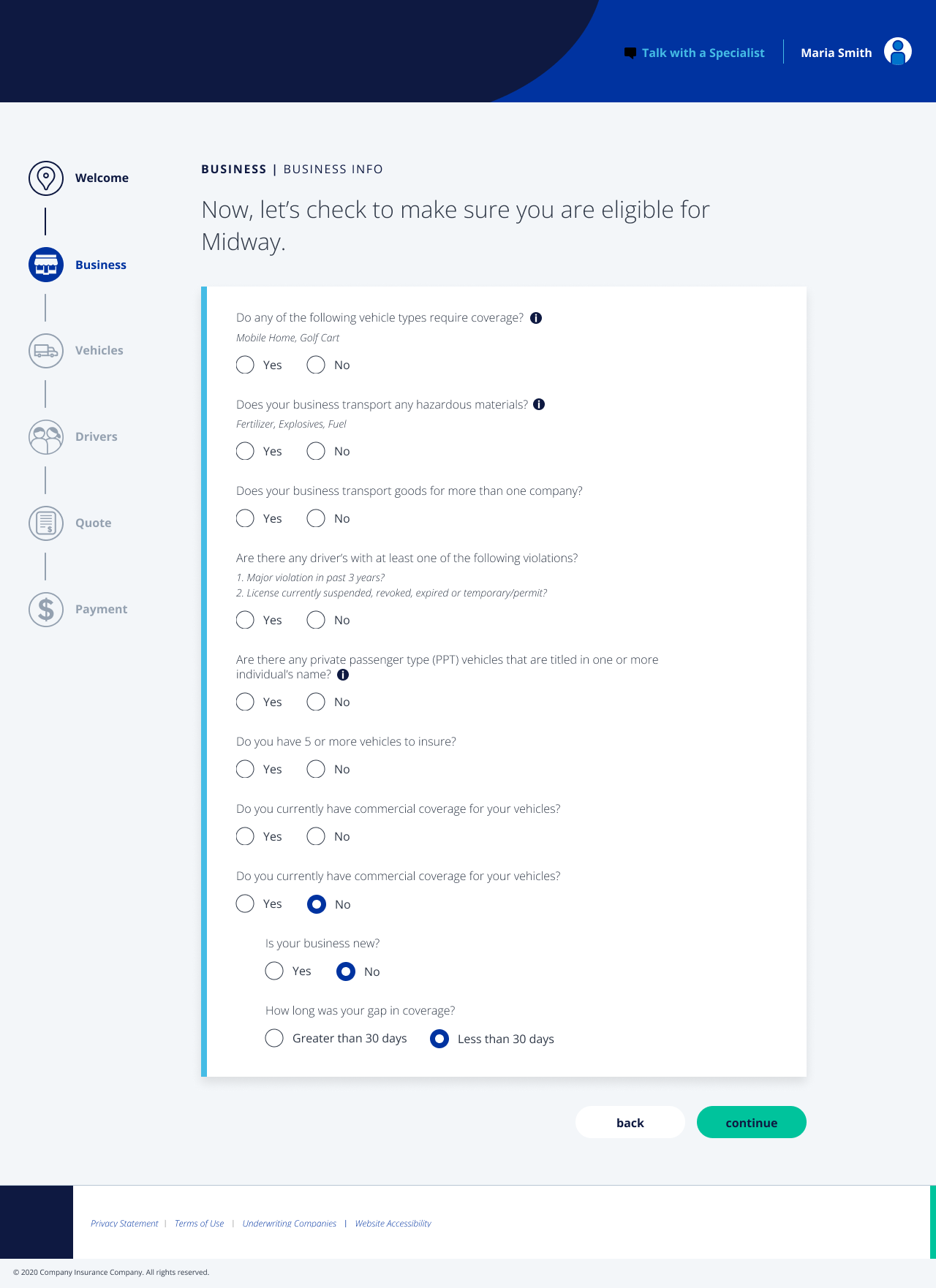
Based on customer needs, different insurance packages are then presented. Easy customization of these packages help customers tweak the details until they are just right for their business.
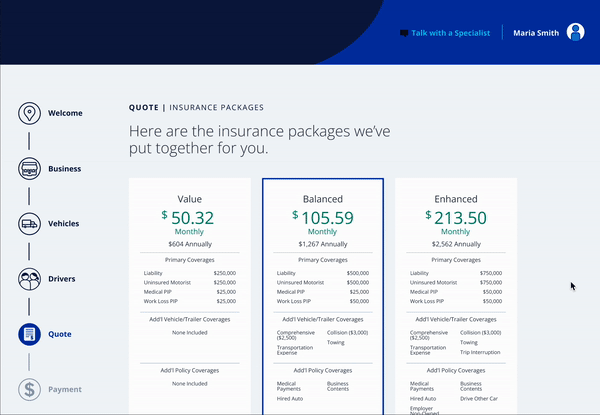
Once a package has been selected, customers input payment information and check out.
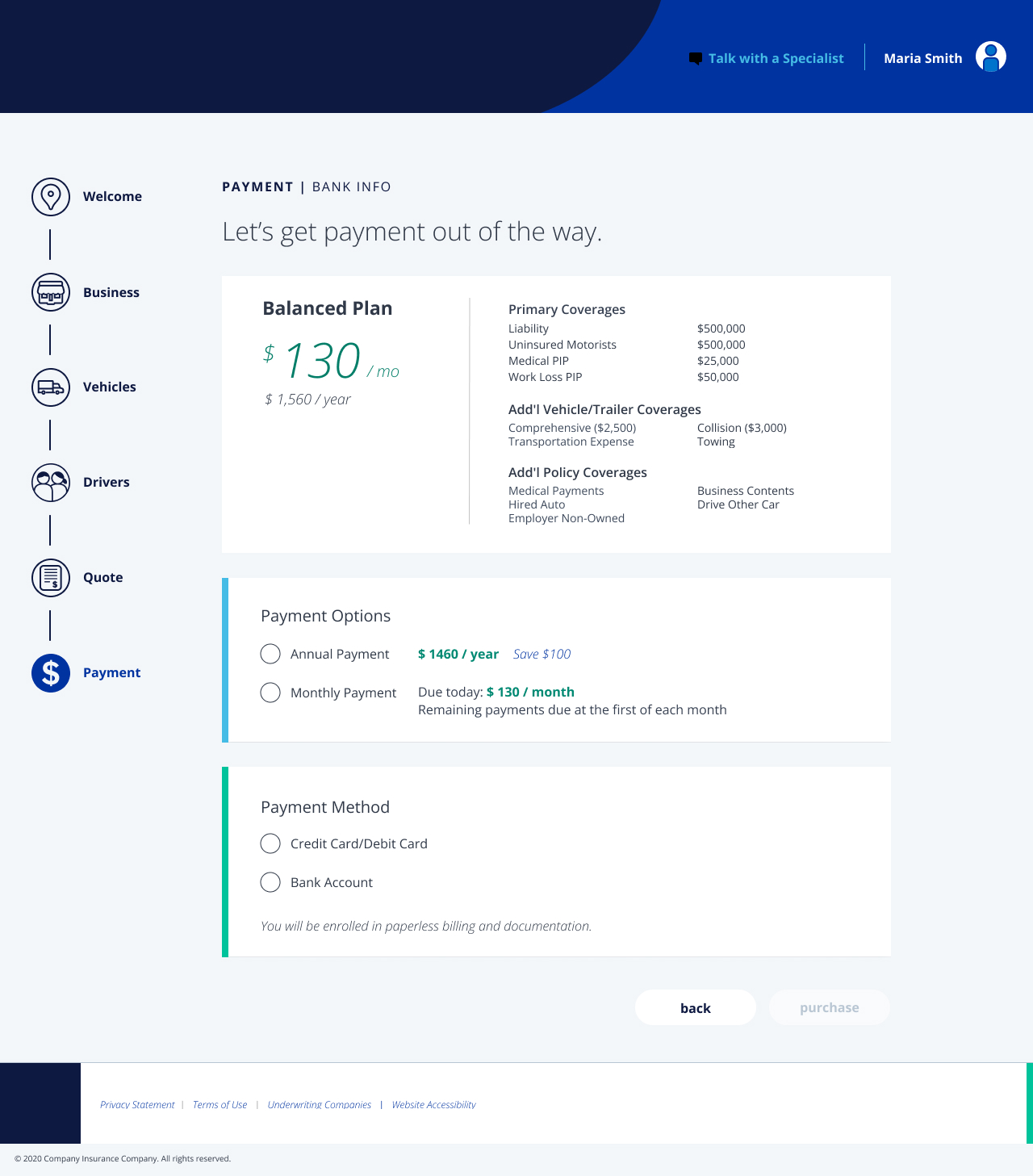
Customers can manage their coverage through an account management experience that allows them to renew coverage, cancel coverage, and more.
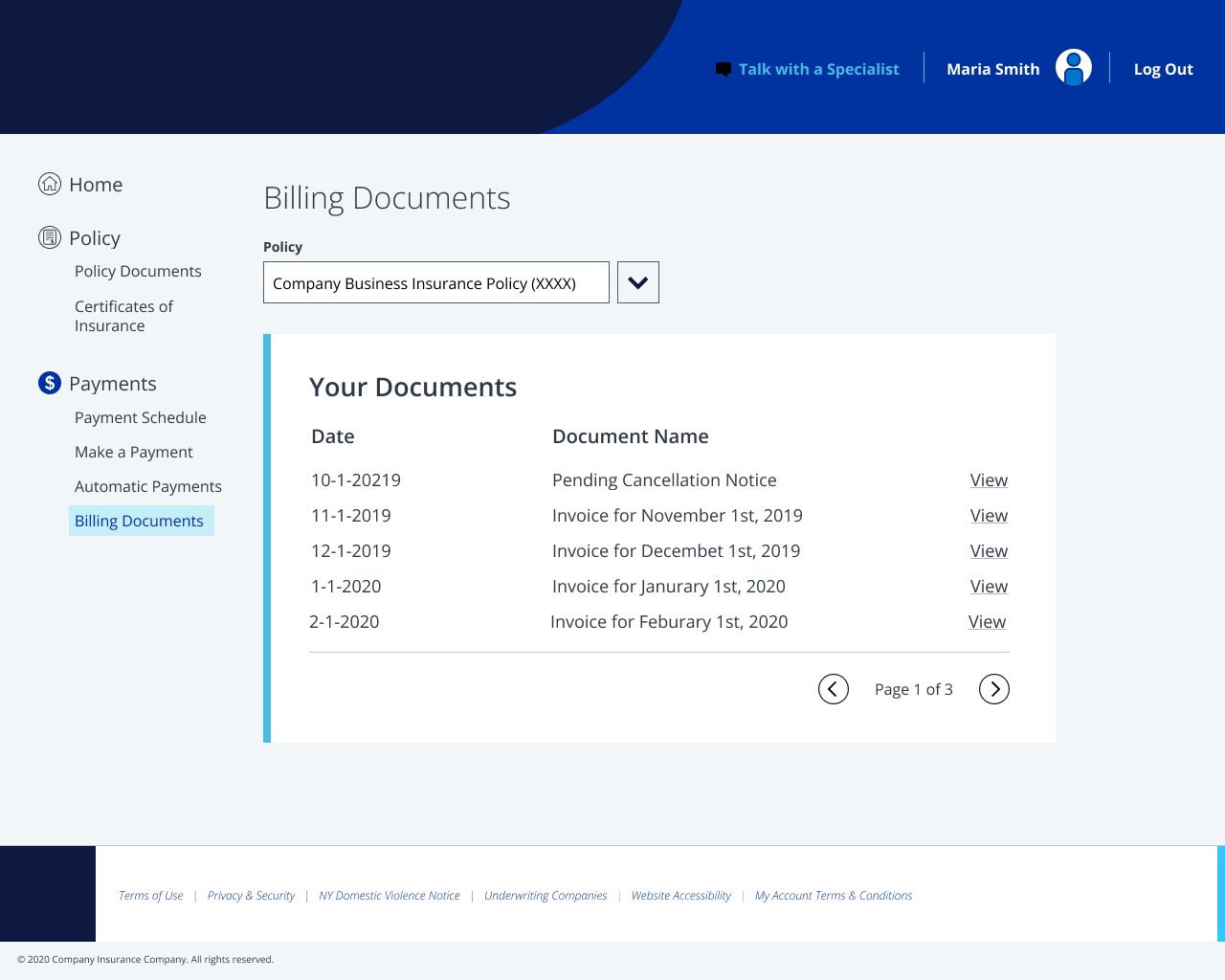
By the time that our team was engaged, our client had already worked with a different design team to conceptualize and create a north star vision for the product, along with key features for us to include in our designs. We built on this work by creating designs that were technically feasible for a development team to deliver within our 4 month timeline.
In their research, the earlier team identified 2 key insights to guide our designs.
The team found that customers seek to be heard and understood throughout the quoting process, whether they are getting a quote themselves or from a sales agent. They want their experience to be personalized to their business and needs.
As a result, the experience should offer the right products at the right time, catered towards the needs of the business.
One customer said "I explained to [the agents] my situation and ... they didn't just tell me [my insurance needs] they explained to me why I needed that. And so that kind of honesty and communication, that really opened up sort of a trust with them."
Another key insight the team found was that flexibility in customization of a quote can have many benefits. With customization, customers have increased confidence that their coverage is tailored to their unique business needs, increased understanding around long term consequences of coverage, and gives customers more agency in their relationship with Company.
78% of interviewees rated their confidence in their quote at 7/10 or higher after seeing that they were able to customize their quote. 89% of customers said they would dive into customization instead of opting for the recommended quote.
I created lo/mid-fidelity wireframes to validate assumptions that the team had made about the technology powering the experience. Through conversations with the client’s product and technology team, I better understood business requirements and technology constraints. This helped me to ultimate deliver detailed wires for development (prior to visual design finalization).
I built wireframes for all parts of the experience, from the landing page through to account management.
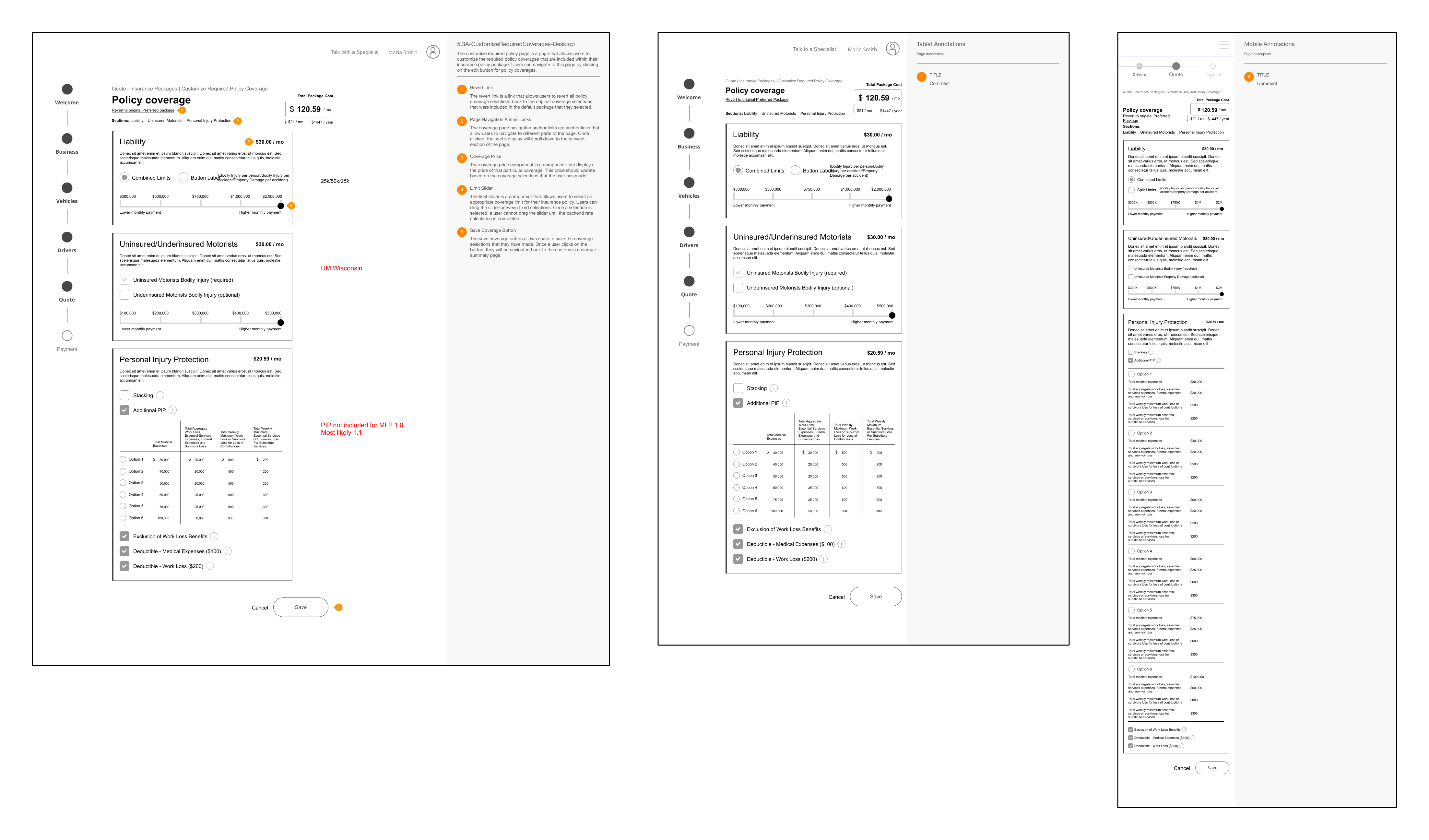
While I was building wireframes, the visual designer on my team worked with the client’s branding team to align on visual design elements and design system components to use within our experience. They created a number of representative screens and components. I used these components to increase fidelity of my designs and deliver detailed designs.
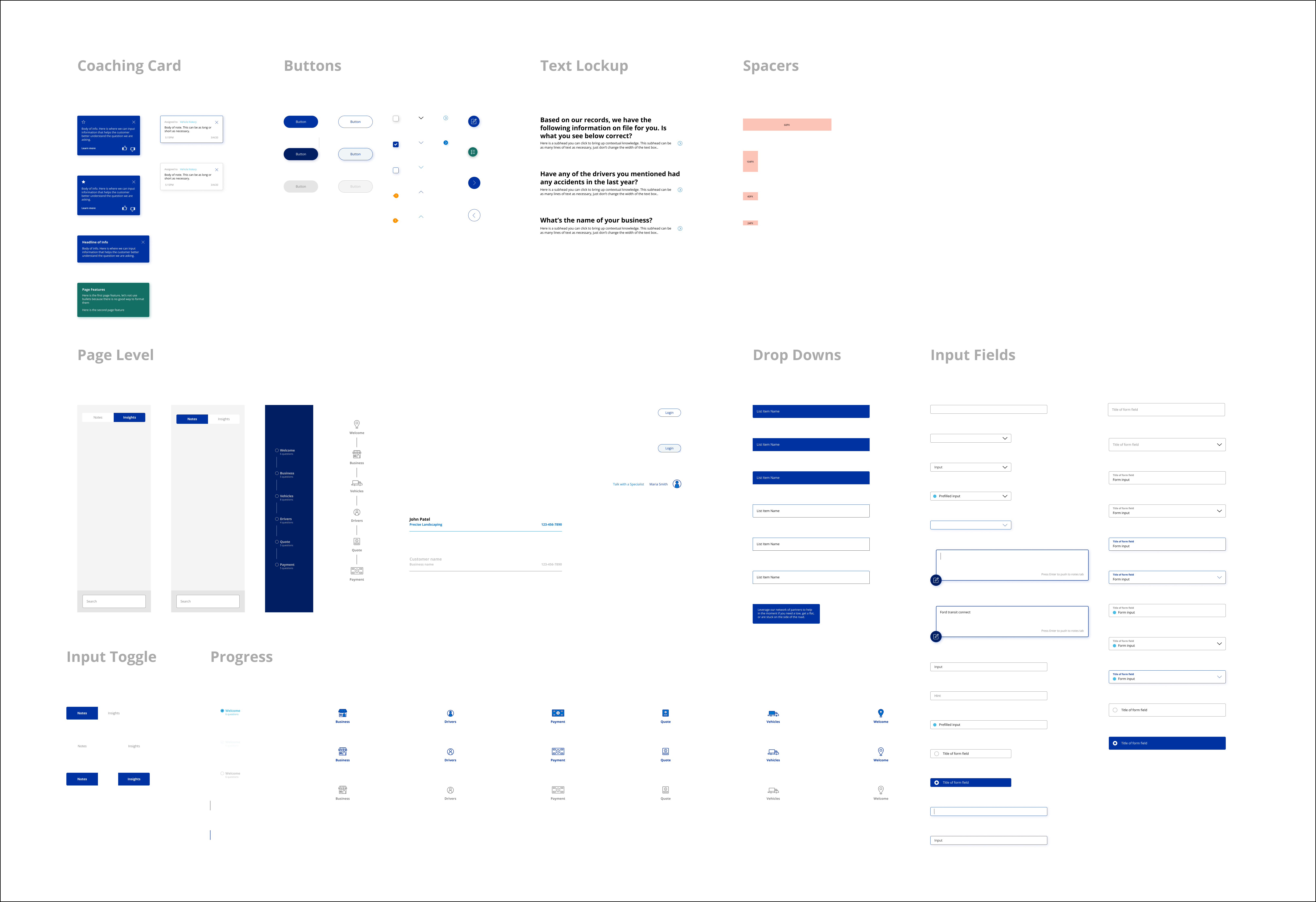
A simple qualification and business information gathering process allows Company to build customer trust. Customers answer questions about their business so that Company can recommend the correct coverage for them. We simplified the number of questions required in order to streamline the process and make it more user friendly.

Customers can customize the recommended packages that they receive. The design allows customers to see in real time how their changes affect the price of their coverage. It also gives them additional information on what each coverage is and how it works.

Ultimately, designs were handed off to developers through a tool called Zeplin. Zeplin allows developers to find the assets they need, and also the specs that the designs need to be built to.
Throughout the development process, I was in close contact with the team to refine designs that proved challenging to build, offering solutions and quick fixes to ensure that the MVP was airtight.
